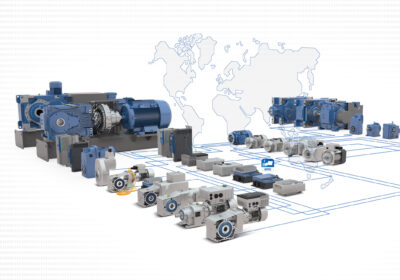~ Automating manual machine tending operations can benefit both machine tool manufacturers and end users in the Industry 5.0 era ~
Gaining competitiveness is a priority for manufacturers and users of machine tools in Europe. This goal goes hand in hand with embracing digitalisation and achieving Industry 5.0. Automatic tool changers (ATC) play a role in this. Enabled by robotics, ATC can help OEMs develop more competitive machine tools that address end users’ most pressing challenges. Here, Serhat Volkan Yilmaz, robot technologies general manager of Tezmaksan Robot Technologies, explains.
According to CECIMO, the European Association of Manufacturing Technologies, machine tool orders decreased by 20 per cent in the first quarter of 2024 compared to the same period last year. The association also estimates that consumption levels will be down 1.8 per cent by the end of 2024, with machine tool production falling by five per cent.
To become more competitive, machine tools must meet the end users’ growing demand for efficiency, productivity and accuracy. This is where addressing labour-intensive operations, like machine tending, with automation can be a game changer.
Maximising competitiveness with easy-to-implement robotics
Routine machine tending operations like loading and unloading CNC machines remain predominantly manual across many manufacturing applications. This outdated approach can harm productivity and efficiency while also translating into high labour costs. Manual operations may also lead to human errors like improper tool placement or damage, impacting part quality and leading to unnecessary waste. The outcome is reduced competitiveness.
The most advanced ATC systems implement robotics into existing machine tools and prioritise intuitiveness. Visual elements, drag-and-drop functionality and predefined templates allow workers without programming skills to program robots to perform routine CNC operations with minimal training.
Modern ATCs like the CubeBOX Tool-PRO system from Tezmaksan enable multiple machines to operate seamlessly without interruptions caused by manual loading and unloading. This uninterrupted workflow translates to up to 50 per cent improvement in night shift efficiency compared with manual CNC machine tending, as proven by tests conducted by Tezmaksan. With this technology, OEMs can develop machine tools that enable end users to achieve greater productivity and shorter lead times.
Retrofitting is key to competitiveness
Embracing automation is a no brainer. However, it is often beyond the reach of many European machine tool OEMs and end users. For small-to-medium enterprises (SMEs) with limited financial resources, implementing complex automation systems entails significant overheads. One solution is retrofitting existing machines with intelligent capabilities thanks to hardware-agnostic ATC solutions.
Machine tool manufacturers can augment their existing product lines’ capabilities without redesigning them. End users can enable the smart operation of legacy machines, extending their functional lifespan and delaying the need for costly replacements.
ATC systems like CubeBOX Tool-PRO maximise flexibility as they are compatible with all CNC machines and control units and can be adapted to all brands of robots. What’s more, the system is 20 per cent cheaper than company-specific robot integration systems due to the plug-and-play nature of the solution.

Maximising competitiveness en route to Industry 5.0
Digitalisation is one of the core principles underpinning Industry 5.0. Leading machine tool producers like Italy are adopting specific legislation to incentivise OEMs and end users to digitalise their operations. The goal of these incentives is to help businesses maximise efficiency and gain competitiveness internationally. Real-time monitoring is critical to achieving this goal.
The integration of IoT-enabled ATCs in a smart factory environment already enables users to monitor machine tool operations in real time. For example, monitoring the energy consumption of multiple components within the system enables operators to implement corrective measures to optimise energy efficiency. Another core application of digitalisation is maintenance. Modern ATCs already enable operators to perform predictive maintenance. Advancements in AI will unlock huge opportunities for even more sophisticated predictive maintenance in the machine tool sector. Digital twinning is a case in point.
By creating a digital twin of an ATC system, maintenance engineers can perform critical predictive maintenance operations from remote locations while providing a range of after-sales services, from troubleshooting to spare part management and online monitoring.
The ability to prevent most faults and fix problems immediately will dramatically reduce downtime in machine tool applications. This is a win-win situation for machine tool manufacturers and end users. The former can gain competitiveness thanks to better machine products that meet their customers’ needs. The latter can maximise efficiency and productivity, reduce costs and make progress toward Industry 5.0.
For more information about Tezmaksan’s CubeBOX CNC automation system visit the website or speak to a specialist today.








